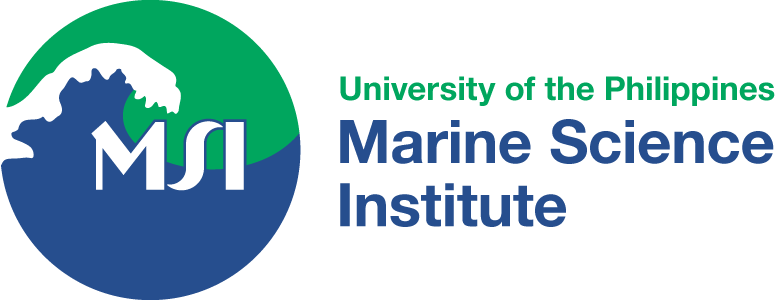-
Bulletin #02: Oil spill trajectory model forecasts that spill will reach Metro Manila by July 30
Featured image: Bulletin #02: Oil spill trajectory model forecasts that spill will reach Metro Manila by July 30 An oil spill trajectory model was run to forecast the transport of the slick…
-
Bulletin #01: Oil spill trajectory model forecasts that spill will reach Bulacan and Cavite
Featured image: Bulletin #01: Oil spill trajectory model forecasts that spill will reach Bulacan and Cavite Through the collaborative efforts of the Department of Environment and Natural Resources, the Philippine Space Agency,…
-
UP MSI awarded 2024 Gawad Tsanselor for NARFleet
UP Marine Science Institute (UP MSI) was honored with the 2024 Gawad Tsanselor sa Natatanging Programang Pang-ekstensiyon for the establishment of the National Academic Research Fleet (NARFleet). Director Dr. Laura David received…
-
Making waves in the Marine Biotechnology track
Written by Dorothy Andrada There is a wealth of resources found beneath the ocean’s waves, and new breakthroughs in science and technology make it easier for us to use them. Under the…
-
Turning the tide through the Marine Physical Sciences track
Written by Dorothy Andrada The ocean is a force of nature that harbors both powerful currents and calm waves. Understanding its power and how it ebbs and flows is important. Under the…
-
Diving deep into the Marine Biology track
Written by Dorothy Andrada Fish, corals, and seaweed are what usually come to mind when one thinks of the sea. The vibrant biodiversity beneath the waves is a core part of any…
-
Morphological and Molecular Evidence for the Identity of Two Land Hermit Crabs Coenobita longitarsis De Man, 1902 and C. pseudorugosus Nakasone, 1988 (Crustacea: Decapoda: Anomura: Coenobitidae)
Summary The hermit crabs that most people encounter are terrestrial, occupying a a variety of snail shells (and even plastic trash when shells are rare) throughout the tropics. Despite their iconic presence…
-
A multi-framework analysis of stakeholders’ perceptions in developing a localized blue carbon ecosystems strategy in Eastern Samar, Philippines
Summary Blue carbon ecosystem (BCE) is composed of mangroves, seagrasses, and seaweeds that have the capacity to absorb large amount of carbon from the atmosphere. With the rising global temperatures and carbon…
-
Utility of low-cost recreational-grade echosounders in imaging and characterizing bubbly coastal submarine groundwater discharge
Summary Despite the growing knowledge on the significance of submarine groundwater discharge (SGD), mapping its occurrence is a continuing challenge. This study explores the utility of low-cost, accessible, recreational-grade echosounders (RGESs) to…
-
Seafloor Structures and Static Stress Changes Associated With Two Recent Earthquakes in Offshore Southern Batangas, Philippines
Summary This research mapped the active offshore faults in Batangas Bay and part of Verde Island Passage. It is of such importance since the area of interest is the site of the…
